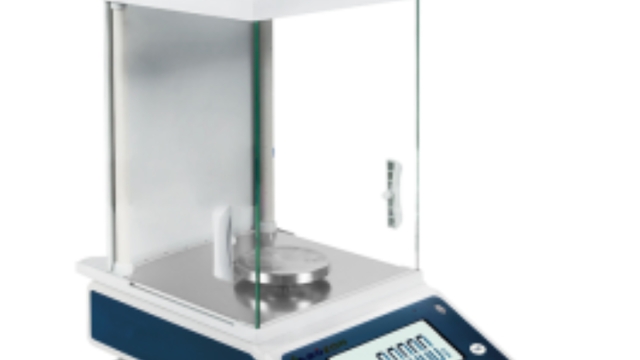
In any high-precision laboratory setting, the accuracy of measurements is paramount, and this is where analytical balances play a crucial role. These sensitive instruments are designed to provide precise weight measurements, which are essential for a wide range of experiments and applications. However, to ensure that these balances perform optimally, regular calibration is necessary. Calibration not only guarantees that the balance provides accurate readings but also helps maintain consistency and reliability in analytical results.
W&J Instrument, a leading manufacturer and supplier of electronic balances and laboratory instruments, understands the importance of precision in scientific measurements. By ensuring that analytical balances are properly calibrated, laboratories can avoid costly errors and enhance the quality of their research. Whether you are measuring tiny samples or working with complex formulations, having a well-calibrated analytical balance is critical for achieving trustworthy results that can withstand scrutiny.
Understanding Calibration in Analytical Balances
Calibration is the process of adjusting an analytical balance to ensure accurate and precise measurements. This procedure involves comparing the balance’s measurements against a standard of known weight to determine any discrepancies. Establishing a baseline of accuracy is crucial for laboratories that rely on high-precision results, as even the slightest deviation can lead to significant errors in experimental outcomes. Regular calibration helps maintain the integrity of data collected during various testing and research processes.
For an analytical balance, calibration is not just a one-time task; it requires ongoing attention and routine checks. Environmental factors such as temperature, humidity, and air currents can influence the balance’s performance. Additionally, users might inadvertently introduce errors through improper handling or maintenance. By implementing a scheduled calibration routine, laboratories can ensure that their balances operate within specified tolerances, leading to consistent and reliable results.
Try It Out
The choice of calibration weights is equally important, as they must meet stringent guidelines to ensure accuracy. High-quality calibration weights are characterized by their precision and stability against environmental variations. Using certified weights during the calibration process reinforces the reliability of the balance and ultimately the quality of the measurements taken. Proper calibration not only enhances balance performance but also fosters confidence in the results produced, making it an essential practice for any laboratory striving for excellence.
Importance of Accurate Measurements
Accurate measurements are the foundation of any scientific research and laboratory analysis. Precision in measurement ensures that results are reliable and valid, which is essential for making informed decisions based on the data collected. In high-precision applications, even the slightest deviation can lead to significant consequences, impacting the integrity of the findings and potentially affecting subsequent experiments or product quality.
Laboratories rely heavily on high-precision analytical balances to produce accurate weight measurements. These balances must be regularly calibrated to maintain their performance and reliability. A well-calibrated balance minimizes the risk of errors and provides consistent results, which is crucial for applications ranging from pharmaceuticals to environmental testing. Without accurate measurements, the results of experiments can be misleading, leading to incorrect conclusions and wasted resources.
Moreover, the reputation of a laboratory often hinges on its ability to deliver precise and accurate results. Clients and regulatory bodies expect a high standard of precision, and achieving this depends on the quality and reliability of the equipment used. Investing in calibration procedures not only enhances measurement accuracy but also reinforces the credibility of the laboratory, ultimately contributing to its success and recognition in the scientific community.
W&J Instrument’s Calibration Solutions
W&J Instrument offers a comprehensive range of calibration solutions tailored specifically for high-precision laboratory analytical balances. Understanding the critical role that calibration plays in ensuring accurate measurements, they provide services that meet rigorous industry standards. Their expert team utilizes state-of-the-art equipment to perform calibrations that enhance the performance of analytical balances, ensuring that every measurement reflects true accuracy.
In addition to traditional calibration services, W&J Instrument also supplies customers with easy-to-use calibration weights and tools designed to facilitate routine checks. By providing users with the right resources, such as calibration certificates and detailed guides, W&J empowers laboratories to maintain their balances with confidence. This proactive approach to calibration helps ensure that businesses avoid costly errors and maintain compliance with quality control regulations.
Furthermore, W&J Instrument understands that each laboratory has unique requirements. Their calibration solutions are customizable, allowing customers to select services that best match their specific operational needs. By investing in W&J’s services, laboratories can streamline their workflows and enhance productivity, knowing that their analytical balances are operating at peak performance.
Best Practices for Maintaining Balance Performance
To ensure the long-term performance of your analytical balance, regular cleaning and maintenance are essential. Dust and residues can accumulate on the balance pan and surrounding areas, affecting measurement accuracy. Use a soft, lint-free cloth and appropriate cleaning solutions to keep the surface clean. Additionally, avoid touching the balance pan with your hands, as oils and dirt from skin can compromise results.
Proper calibration is another crucial factor in maintaining balance performance. It is recommended to calibrate the analytical balance at least once a week, or more frequently if the balance is used heavily or if environmental conditions change. Utilize certified calibration weights that meet the specifications required for your balance, ensuring that you are working with accurate reference points to support consistent measurements.
Finally, it is important to monitor the environmental conditions where the balance is located. Factors such as temperature fluctuations, humidity, and vibrations can greatly affect balance performance. Position the balance in a stable, vibration-free area away from drafts and direct sunlight. Utilizing a draft shield can also help mitigate airflow disturbances, which further promotes precise weighing and better accuracy in your laboratory measurements.



